The Silent Threat in Your Feet: Understanding Peripheral Arterial Disease
September 18 2025
September is P.A.D. Awareness Month! Our podiatrists want to share a crucial reminder: your feet can be the first to signal Peripheral Artery Disease.
Don’t ignore symptoms like leg cramps, cold feet, or slow-healing wounds – they’re your body’s early warning system for serious vascular condition that could affect your heart and brain,. Stay vigilant and get checked!
Robert Bello, DPM, AACFAS
Kevin Lam, DPM, FACFAS
I often find myself playing detective. Patients come in complaining of a host of foot and ankle issues: a nagging ache in their calves, a persistent coldness in their toes, or a wound on their foot that just won’t heal. They often attribute these symptoms to a sprain, a bit of arthritis, or simply “getting older.” But my trained eye, and a few key diagnostic questions, can often uncover a far more serious culprit: Peripheral Artery Disease, or P.A.D.
P.A.D. is a silent epidemic, a vascular condition that affects millions of people, yet remains largely under-treated. It’s a condition where plaque builds up in the arteries that carry blood to your limbs and organs, most commonly the legs and feet. This buildup, known as atherosclerosis, narrows the arteries, reducing blood flow. The consequence is a limb starved for oxygen and nutrients, leading to a cascade of debilitating symptoms and, if left untreated, catastrophic outcomes.
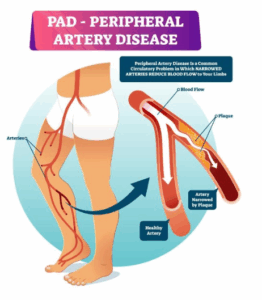
The Feet: A Crucial Warning System
My practice serves as a critical front line in the fight against P.A.D. The reason is simple: the feet are often the first place to show signs of this systemic disease. The furthest point from the heart, the feet and toes are the canary in the coal mine, alerting us to a circulatory problem long before it might manifest elsewhere. When a patient presents with classic P.A.D. symptoms, it’s not just a foot problem; it’s a warning sign for their entire cardiovascular system. The same plaque that’s narrowing the arteries leading to their heart and brain, putting them at a significantly higher risk for heart attack and stroke.
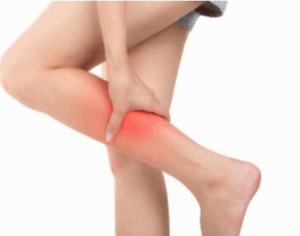
Recognizing the Red Flags
So, what are the red flags I look for? The most classic symptom is intermittent claudication. This is a cramping pain or tiredness in the leg or hip muscles that occurs during activity, like walking, but subsides after a few minutes of rest. Patients often describe it as a muscle ache or “charley horse” that consistently appears after they’ve walked a certain distance. It’s a classic symptom of oxygen deprivation to the muscles. The severity of the claudication often corresponds to the severity of the blockage.
Beyond claudication, the physical signs in the feet and lower legs are what truly catch my attention. I look for changes in the skin color and temperature – feet that are pale, bluish, or abnormally cool to the touch. The skin may become shiny and taut, and hair growth on the legs and feet may diminish or disappear. Fingernails and toenails may thicken and become brittle. I’m also on the lookout for non-healing wounds. A minor cut, a blister from a new pair of shoes, or an ingrown toenail that simply won’t heal is a major red flag. Without adequate blood flow, the body’s healing mechanisms are crippled, and a simple wound can quickly progress to a deep, festering ulcer, and, in the worst-case scenario, gangrene, necessitating amputation.
Key Symptoms of P.A.D. in the Feet:
Intermittent Claudication: Pain or cramping in the legs that occurs with walking and stops with rest.
Non-healing Wounds: Cuts, sores, or blisters on the feet that don’t heal, or heal very slowly.
Changes in Skin and Hair: Shiny, thins skin, hair loss on the legs and feet; and pale or bluis discoloration.
Non-Healing Wounds: Cuts, sores, or blisters on the feet that don’t heal, or heal very slowly.
Changes in Skin and Hair: Shiny, thin skin; hair loss on the legs and feet; and pale or bluish discoloration.
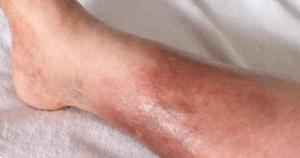
Temperature Differences: One foot or leg may feel noticeably cooler than the other.
Nail Changes: Thickened, brittle toenails
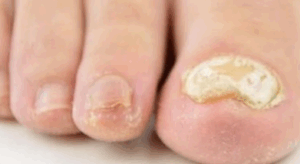
Foot Pain at Rest: A severe sign, indicating advanced disease.
My Diagnostic Approach
My diagnostic process is straightforward and non-invasive. After a thorough physical examination and a review of the patient’s medical history, I’ll often perform and Ankle-Brachial Index (ABI) test. This simple procedure compares the blood pressure in the ankle to the blood pressure in the arm. A low ankle-brachial index is a strong indicator of P.A.D. I may also use a Doppler ultrasound to listen to the blood flow in the arteries and identify blockages. These simple tests provide invaluable information and a roadmap for treatment.
A Collaborative Treatment Plan
My role, however, extends far beyond diagnosis. Once P.A.D. is confirmed, I become a crucial member of the patient’s healthcare team. I educate them about the disease, emphasizing the link between their foot pain and their overall cardiovascular heatlh. I explain the importance of lifestyle modifications: quitting smoking (the single greatest risk factor for P.A.D.), managing diabetes and high blood pressure, and adopting a healthy diet and exercise regimen. Regular, supervised walking programs can actually help the body form collateral circulation – new, small blood vessels that bypass the blocked ones.
For those with more advanced disease, I work in close collaboration with vascular specialists. Together, we may recommend medications to improve blood flow, such as antiplatelet agents, or more advanced procedures like angioplasty and stenting to open up the narrowed arteries, or bypass surgery to reroute blood flow around a blockage. The goal is always to restore circulation, relieve symptoms, and prevent the devastating consequences of untreated P.A.D.
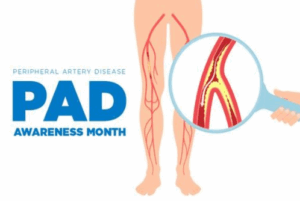
September: P.A.D. Awareness Month
As we enter September, it is a crucial time to elevate the conversation about Peripheral Artery Disease. September is P.A.D. Awareness Month, a dedicated time to educate the public about this often-missed  condition. It’s a reminder for all of us—patients and healthcare professionals alike – to be more vigilant. This month, I encourage you to take a moment to listen to your body, especially your legs and feet. If you have any of the symptoms I’ve described, or if you have risk factors such as a history of smoking, diabetes, high blood pressure, or high cholesterol, now is the time to schedule an appointment with your podiatrist or primary care physician. Early detection is key to preventing the serious complications of P.A.D.
condition. It’s a reminder for all of us—patients and healthcare professionals alike – to be more vigilant. This month, I encourage you to take a moment to listen to your body, especially your legs and feet. If you have any of the symptoms I’ve described, or if you have risk factors such as a history of smoking, diabetes, high blood pressure, or high cholesterol, now is the time to schedule an appointment with your podiatrist or primary care physician. Early detection is key to preventing the serious complications of P.A.D.
To my patients, and to anyone reading this, I urge you not to ignore the signs. Your feet are trying to tell you something. Aching calves, a perpetually cold foot, or a wound that won’t heal are not just minor annoyances. They could be a symptom of a serious, life-threatening condition. By recognizing the signs of P.A.D. early and seeking the care of a podiatrist, you’re not just saving your feet; you’re safeguarding your heart, your brain, and your future. Don’t wait until it’s too late. Listen to your feet. They may just save your life.
If you are experiencing symptoms of P.A.D., contact Dr. Bello’s office at (239) 430-3668 (FOOT) or visit us online at www.NaplesPodiatrist.com to schedule an appointment.
Serving Southwest Florida Since 2005, Family Foot & Leg Center has multiple convenient locations throughout Collier, Lee, Charlotte, and Sarasota Counties. Offering pediatric to geriatric family care: Ingrown Toenails, Heel Pain, Bunions, Foot / Ankle Arthritis Pain, Plantar Fasciitis, Foot / Ankle Surgery, Custom Orthotics, and Diabetic Wound Care. In office X-rays, ultrasounds, and minor surgical suite exam rooms. Practice powered by EMR and advanced technologies.
Home of the Lam Minimally Invasive No-Scar Bunion Surgery! Come Discover Why Patients Love Our 5-Star Foot & Ankle Care!
For advanced wound management and diabetic wound healing resources, visit:
👉 WoundHealingExperts.com
Same Day Appointments! Easy Online Appointment Scheduling.

 Fax: (239) 692-9436
Fax: (239) 692-9436 Tel: 239-430-3668
Tel: 239-430-3668